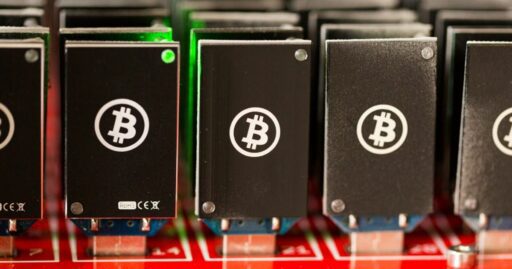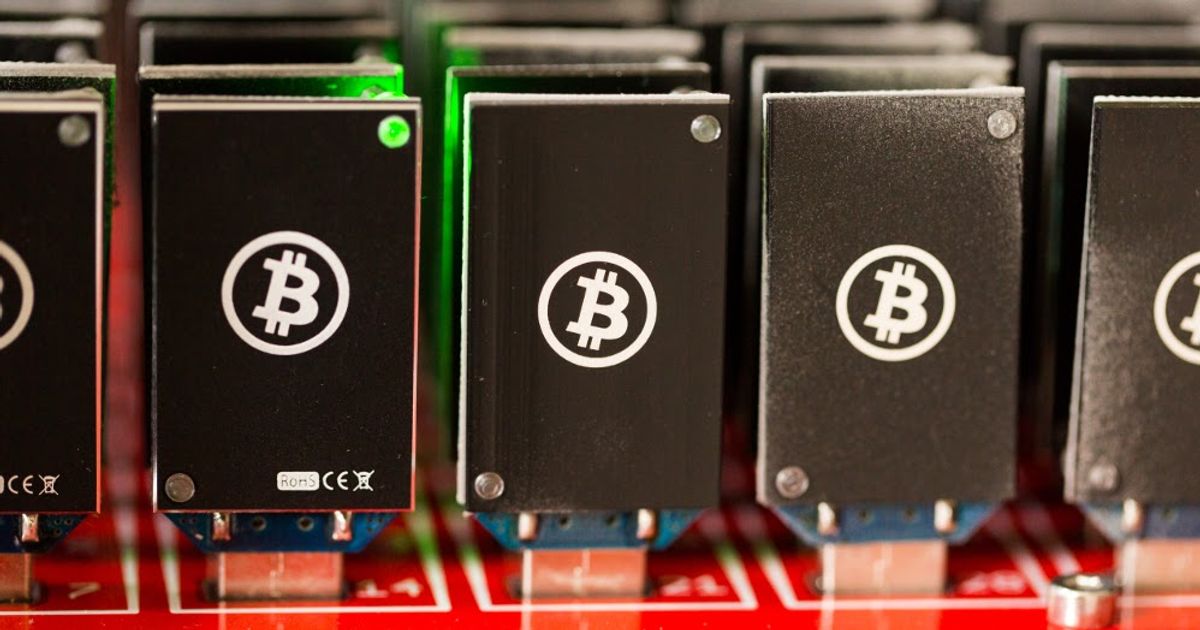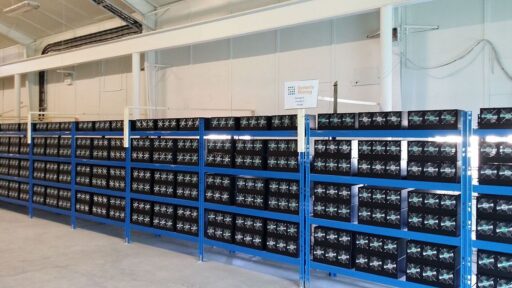Bitcoin mining, the process through which new bitcoins are created and transactions are added to the blockchain, is a foundational aspect of the cryptocurrency ecosystem. However, mining is not a straightforward task, and understanding the strategies and technologies involved is crucial for anyone venturing into this domain. In this comprehensive guide, we unravel the intricacies of Bitcoin mining, exploring the top strategies and technologies that miners employ in the ever-evolving landscape of digital currency.
Key Takeaways
- The evolution from CPU to ASIC mining illustrates the increasing complexity and competitiveness in the Bitcoin mining landscape.
- Mining pools are essential for individual miners to remain competitive and achieve a more predictable stream of income.
- Optimizing mining operations involves a delicate balance between performance, energy consumption, and effective cooling systems.
- Mining software like CGMiner plays a critical role in managing the mining process and can be customized for better efficiency.
- Future trends in Bitcoin mining will likely focus on sustainability, adaptability to network changes, and preserving decentralization.
Understanding the Evolution of Mining Hardware

The Early Days of CPU Mining
In the nascent stages of cryptocurrency, CPU mining was the gateway for enthusiasts to enter the mining scene. The simplicity of using existing home computers made it an accessible option for many early adopters. However, as the Bitcoin network’s difficulty increased, the limitations of CPU mining became apparent. CPUs, while versatile, lacked the processing power to compete as the network grew.
The shift from CPU to more advanced mining hardware was inevitable, driven by the need for greater efficiency and higher hash rates.
Despite its decline in the Bitcoin mining arena, CPU mining remains relevant for certain altcoins where the network difficulty is still within reach. Crypto mining involves complex processes like selecting compatible hardware, assembling rigs, and optimizing for efficiency. Consider costs, benefits, and diversification for successful mining ventures.
- Early CPU miners enjoyed low network difficulty.
- CPUs are now outpaced by more specialized hardware.
- CPU mining is still viable for some altcoins.
The Transition to GPU Mining
As the Bitcoin network matured, the mining difficulty increased, necessitating more powerful hardware. This led to the adoption of graphics processing units (GPUs), which offered a significant leap in processing power over CPUs. GPUs excel in parallel processing, which is ideal for the cryptographic calculations required in mining.
The versatility of GPU mining rigs also meant that they could be repurposed for other applications, such as AI and graphic design, providing additional value beyond mining. However, the choice between ASICs and GPUs involves careful consideration of energy consumption and overall efficiency, which are critical for profitability.
The strategic selection of mining hardware is pivotal in navigating the competitive landscape of Bitcoin mining.
The Rise of ASIC Mining
With the advent of ASIC miners, the landscape of cryptocurrency mining underwent a seismic shift. These Application-specific integrated circuits are engineered exclusively for mining, delivering an astonishing speed increase and efficiency that CPUs and GPUs simply cannot match. The dominance of ASICs in the field is a testament to their superior processing power, which has become the gold standard for miners aiming to maximize their returns.
ASIC technology has not only revolutionized the mining process but also raised the bar for entry into the mining ecosystem. The high initial investment and the ongoing race for more advanced models create a challenging environment for newcomers.
While ASICs offer impressive hash rates and energy efficiency, they come with a trade-off in flexibility. Unlike GPUs, which can be repurposed for different tasks, ASIC miners are locked to a specific cryptocurrency, making them a more rigid investment. Here’s a quick comparison of ASIC and GPU mining capabilities:
- ASIC Mining: Unmatched efficiency and processing power for specific cryptocurrencies.
- GPU Mining: Greater versatility with the ability to mine different cryptocurrencies and perform other computational tasks.
The choice between ASIC and GPU mining will depend on individual strategies and the specific requirements of the cryptocurrency being mined.
The Strategic Role of Mining Pools

The Basics of Mining Pool Dynamics
Mining pools have revolutionized the way individual miners approach the challenge of cryptocurrency mining. By joining forces in a mining pool, miners can combine their computational resources to increase their collective hashing power and improve their chances of successfully mining a block. The rewards are then distributed among participants proportionally to the amount of power each contributed, ensuring a more predictable and steady income than what solo mining might offer.
- Steadier Income: Predictable rewards compared to solo mining.
- Collective Power: Increased chances of mining success.
- Proportional Rewards: Fair distribution based on contribution.
The strategic decision to join a mining pool can significantly impact a miner’s profitability and should be made with careful consideration of various factors, including pool size, fee structure, and payment methods.
While larger pools might offer more consistent rewards due to their higher hashing power, they may also charge higher fees. Conversely, smaller pools might have lower fees and offer miners a chance to have a more substantial impact on the pool’s success, but with less frequent payouts. Balancing these factors is key to optimizing mining pool participation.
Benefits of Collaborative Mining
Mining pools have revolutionized the way individual miners approach cryptocurrency mining. By joining forces, miners benefit from a more consistent payout schedule, as rewards are distributed based on the proportion of work each miner contributes. This collaborative effort not only stabilizes income but also democratizes the mining process, allowing even those with limited resources to participate effectively.
- Increased chances of earning rewards: By pooling resources, miners can compete more effectively against larger, more established operations.
- Reduced variance in payouts: Regular, smaller payouts replace the unpredictable nature of solo mining.
- Lower entry barriers: New miners can join the mining community without the need for significant investment in hardware.
The synergy within a mining pool can lead to a more resilient and efficient mining strategy, as pooled resources work towards a common goal.
Choosing the right mining pool is crucial, as it affects the miner’s profitability and the overall mining experience. Factors such as pool size, fee structure, and payout policy should be carefully considered to align with the miner’s objectives.
Choosing the Right Mining Pool
Selecting the right mining pool is crucial for maximizing your crypto mining profitability. Consider factors like pool size, fee structures, and payment methods. Larger pools tend to offer more consistent rewards, but smaller pools might contribute more significantly to network security.
When evaluating mining pools, it’s essential to balance the potential for steady income against the desire to support the decentralization of the blockchain. Here’s a quick checklist to help you make an informed decision:
- Assess the pool’s reputation and track record.
- Understand the fee structure and how it affects your earnings.
- Check the pool’s payment scheme and minimum payout.
- Evaluate the pool’s server locations for latency issues.
- Consider the pool’s policies on transparency and security.
By carefully choosing a mining pool, you can ensure a more reliable and potentially more profitable mining experience.
Remember, the right mining pool aligns with your mining goals and values, whether that’s maximizing income, contributing to decentralization, or both. Stay informed about market trends and adjust your strategy to maintain a competitive edge in the evolving landscape of crypto mining.
Optimizing Mining Operations

Importance of Effective Cooling Systems
In the relentless pursuit of Bitcoin mining, effective cooling systems are indispensable. As mining rigs engage in the arduous task of solving cryptographic puzzles, they invariably generate substantial heat. Without adequate cooling, this heat can precipitate a cascade of issues, from diminished performance to the premature failure of hardware components.
The impact of cooling on both performance and equipment longevity cannot be overstated. Quiet fans play a pivotal role in this equation, maintaining optimal temperatures and thus minimizing the stress on vital components. This not only curtails the rate of wear and tear but also enhances the cost-effectiveness of the mining setup over time.
Cooling systems are not merely an ancillary concern; they are a fundamental element that directly influences the operational efficiency and sustainability of the mining endeavor.
For those considering residential mining, the choice of cooling solutions is particularly critical. It is essential to select systems that can maintain a balance between effective heat dissipation and noise reduction, ensuring a viable mining operation within a domestic environment.
Balancing Performance and Energy Consumption
In the realm of crypto mining, balancing performance and energy consumption is crucial for long-term profitability. Miners must navigate the delicate interplay between hardware capabilities and power efficiency to ensure sustainable operations.
- Underclocking: A technique to reduce power consumption and heat generation, while maintaining mining efficiency.
- Thermal Management: Essential for preserving hardware lifespan and performance.
- Monitoring: Continuous oversight allows for adjustments to optimize the balance between performance and energy use.
By underclocking and optimizing thermal management, miners can achieve a quieter and more efficient mining environment without significantly impacting performance.
Crypto mining profitability relies on factors like electricity costs, market conditions, and hardware selection. Stay informed, optimize rewards, and avoid pitfalls for successful mining operations.
Selecting and Configuring Mining Rigs
Selecting the right mining rig is a critical decision that shapes the entire mining experience. High-quality mining machines offer superior efficiency, which translates into higher profitability by maximizing the bitcoins earned per unit of electricity consumed. Conversely, outdated or less efficient equipment can lead to increased operational costs and diminished returns.
When choosing between GPU and ASIC miners, consider the following:
- GPU Mining: Offers versatility and is capable of mining different cryptocurrencies. However, GPUs are generally less powerful than ASICs.
- ASIC Mining: Provides high performance for specific cryptocurrencies. ASICs are more efficient but less flexible than GPUs.
The choice between ASICs and GPUs, the rig’s energy consumption, and its overall efficiency are crucial considerations that can significantly affect profitability.
The initial investment in a mining rig is just the beginning. Ongoing expenses such as electricity costs, maintenance, and potential hardware upgrades must also be factored into the overall strategy for a successful mining operation.
Mining Software: The Digital Workhorse

Overview of Mining Software Options
Mining software is the backbone of any crypto mining operation, serving as the interface between the miner’s hardware and the blockchain network. Choosing the right mining software is crucial for optimizing mining efficiency and profitability. There are several options available, each with its own set of features tailored to different types of mining hardware and user expertise.
- CGMiner: A veteran’s choice, known for its robustness and broad hardware support, including ASIC, GPU, and CPU mining.
- EasyMiner: Offers a user-friendly graphical interface, making it an excellent option for beginners.
- BFGMiner: Similar to CGMiner but with additional features like dynamic clocking and monitoring, suitable for both novices and experts.
The landscape of mining software is diverse, with tools ranging from simple to complex, catering to the varied needs of miners. It’s important to assess the compatibility with your mining setup and the level of control you desire over the mining process.
Features of CGMiner: A Veteran’s Choice
CGMiner stands out in the realm of crypto mining software for its robust feature set and enduring popularity. It supports a wide range of hardware, including ASIC, GPU, and CPU miners, making it a versatile choice for various mining setups. Key features such as fan speed control, remote interface capabilities, and self-detection of new blocks with a mini-database contribute to its veteran status.
- Fan Speed Control
- Remote Interface Capabilities
- Self-detection of New Blocks
- Mini-database for Block History
- Multi-GPU Support
- CPU Mining Support
CGMiner’s adaptability and comprehensive feature set ensure that it remains a top choice for miners who value customization and control over their mining operations.
When considering CGMiner, it’s essential to assess its compatibility with your mining hardware and the specific needs of your operation. The right combination of hardware and software is crucial for profitability. Factors such as hash rate, energy consumption, and durability play a significant role in the success of mining endeavors.
Customizing Software for Enhanced Efficiency
Customizing mining software is a critical step in maximizing crypto mining efficiency. By tweaking settings to match the specific hardware and mining conditions, miners can significantly improve their hash rates and, consequently, their potential earnings.
- Overclocking the GPU or CPU can lead to higher computational speeds.
- Adjusting power limits can reduce energy consumption while maintaining performance.
- Fine-tuning memory timings can enhance data throughput.
- Updating to the latest software versions ensures compatibility and security.
It’s essential to balance the quest for peak performance with the longevity of the mining hardware. Pushing components too hard can lead to increased wear and potential failure.
Ultimately, the goal is to create a stable mining environment that optimizes output while minimizing costs. This involves a continuous process of monitoring, adjusting, and testing to find the sweet spot that aligns with market dynamics and the miner’s objectives for passive income and security measures.
Navigating the Future of Crypto Mining

Adapting to Network Difficulty Changes
As the Bitcoin network grows, miners face the challenge of increased network difficulty, which adjusts to maintain a consistent block creation time. This self-regulating mechanism can significantly impact profitability, making it essential for miners to stay informed and adaptable.
The ability to swiftly adapt to network changes is a cornerstone of successful cryptocurrency mining.
Regular equipment upgrades are a necessity in this dynamic environment. Miners who reinvest in the latest ASIC machines can maintain a competitive edge with higher hash rates. Efficiency optimization becomes even more critical during halving events, where rewards are reduced, necessitating a focus on energy-efficient hardware and cost management.
- Stay informed about network changes
- Consider regular hardware upgrades
- Conduct a profitability analysis
- Optimize for energy efficiency
By choosing the right tools and strategies, miners can navigate the complexities of network difficulty and maintain the viability of their operations.
Incorporating Sustainable Mining Practices
The global trend of green Bitcoin mining is reshaping the industry, with a growing emphasis on sustainability and environmental responsibility. As the digital currency market evolves, so too must the practices of those who maintain its infrastructure. Miners are increasingly turning to renewable energy sources, such as hydroelectric or solar power, to reduce their carbon footprint and align with the global push for eco-friendly operations.
Incorporating sustainable mining practices is not just about energy sources; it also involves innovations in mining technology. Energy-efficient ASIC models and the strategic use of renewable energy can lead to a more sustainable mining process. This shift is crucial for the long-term viability of mining, especially considering the post-2140 scenario where transaction fees will play a pivotal role in incentivizing miners.
- Utilize renewable energy sources
- Invest in energy-efficient hardware
- Prioritize energy conservation
- Reduce noise pollution
The pursuit of sustainability in mining extends beyond profitability. It’s about creating a balance that respects the environment and improves the quality of life for miners and the community.
Maintaining Decentralization in Mining
In the realm of cryptocurrency mining, maintaining a decentralized network is crucial for the integrity and security of the blockchain. Centralized mining poses a significant challenge, as it can lead to a concentration of power and potential manipulation of the network. Efforts to foster a distributed network are essential, supporting small-scale miners and promoting mining in regions with untapped potential to prevent centralization.
Bitcoin’s ethos revolves around decentralization, and the community’s continuous efforts are vital in upholding this principle. By ensuring a more resilient and secure network, the blockchain remains true to its foundational ideals.
To achieve this, miners must adapt their strategies, especially in light of events like reward halvings. Efficiency optimization becomes crucial, with a focus on energy-efficient hardware and cost-effective energy sources. Additionally, operational costs must be closely managed to keep mining viable.
The future of Bitcoin mining hinges on the integration of sustainable practices and the steadfast commitment to decentralization. As the industry evolves, these factors will significantly influence the landscape of crypto mining.
Conclusion
As we have explored throughout this guide, the journey of CPU crypto mining is fraught with complexities and requires a nuanced understanding of both hardware and strategy. From the early days of CPU mining to the current dominance of ASICs, the evolution of mining technology has been rapid and relentless. Mining pools, effective cooling systems, and the right choice of mining software like CGMiner are just a few of the critical components that contribute to a successful mining operation. While the landscape of Bitcoin mining continues to shift, the core principles of adaptability, efficiency, and collaboration remain paramount. For those willing to navigate these complexities, the rewards can be significant, but so too are the risks and investments required. As the digital currency ecosystem matures, miners must stay informed and agile, constantly adapting to the latest technologies and strategies to maintain a competitive edge in the ever-evolving world of cryptocurrency mining.
Frequently Asked Questions
What prompted the shift from CPU to GPU mining in Bitcoin’s history?
The shift from CPU to GPU mining was prompted by the need for greater processing power as the network difficulty increased. GPUs offer a significant leap in processing power compared to CPUs, allowing miners to solve mathematical problems more efficiently.
How have ASIC miners changed the landscape of Bitcoin mining?
ASIC miners have become the dominant force in Bitcoin mining due to their specialized design, which offers unparalleled processing power and efficiency. Their higher hash rates make them the preferred choice for serious miners, outperforming CPUs and GPUs.
Why are mining pools important for individual miners?
Mining pools are important because they allow individual miners to combine their computational power to collectively solve problems and share rewards. This collaborative approach provides a steadier stream of income and increases the chances of earning rewards compared to solo mining.
What are the key considerations when selecting and configuring a mining rig?
Key considerations include choosing between ASICs and GPUs, ensuring efficient cooling systems to manage heat, and having a reliable power supply. The overall energy consumption and efficiency of the rig are also crucial for profitable mining operations.
What features make CGMiner a popular choice among veteran Bitcoin miners?
CGMiner is a popular choice due to its wide range of features, including support for multiple types of mining hardware, advanced monitoring capabilities, and the ability to customize settings for enhanced efficiency, making it a versatile tool for experienced miners.
How can miners adapt to changes in network difficulty and maintain profitability?
Miners can adapt by continually upgrading their hardware, optimizing their mining operations for efficiency, and participating in mining pools to mitigate the effects of increased difficulty. Incorporating sustainable practices can also help maintain long-term profitability.





